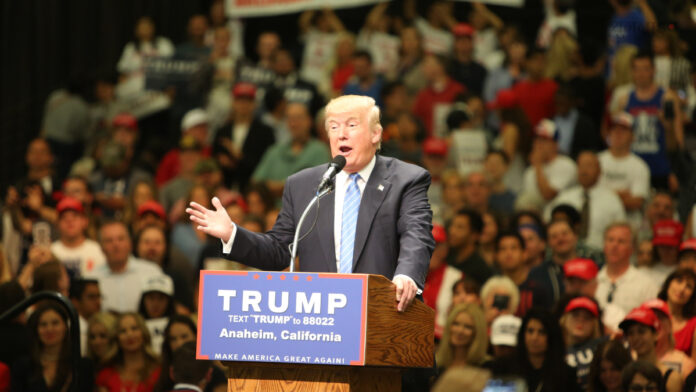WASHINGTON, D.C. — During a recent announcement from the White House Rose Garden, former President Donald Trump heaped praise on Indian Prime Minister Narendra Modi, lauding him as a “great friend.” However, this sentiment was quickly juxtaposed with criticism of India’s high tariffs, leading to the imposition of new duties on Indian imports as part of Trump’s trade strategy.
Trump, speaking on April 3, 2025, highlighted that while he values his personal relationship with Modi, the U.S. has not been treated fairly due to India’s steep import duties. Specifically, he pointed out India’s 52% tariffs on U.S. goods, calling them “very, very tough.” In response, Trump announced a reciprocal tariff of 26% on Indian imports, aiming to balance what he perceives as a trade disparity between the two nations.
“Prime Minister Modi is a smart man and a great friend of mine,” Trump stated, reflecting on their personal rapport. Nonetheless, he stressed the need for fair trading practices, emphasizing that these measures will help reclaim American jobs and industries lost due to imbalanced trade agreements. The new tariffs come amid ongoing discussions between India and the U.S. to finalize a broader trade pact.
The economic friction comes just after Modi’s visit to Washington, D.C., an effort to strengthen bilateral ties amid global economic shifts. Despite the setback from the tariffs, Indian officials have maintained a positive outlook, signaling a willingness to negotiate and potentially reduce duties. However, Trump’s decision underscores the complexities of U.S.-India trade relations, where strategic partnerships often clash with economic interests.
The imposition of the 26% tariff represents one of the highest rates on any major U.S. trading partner. According to Trump, the U.S. aims to establish a 10% baseline tariff on all imports, signaling a shift in trade policy intended to “make America wealthy again.” The move is also seen as a broader strategy to address trade deficits with multiple countries, including a $100 billion deficit noted with India.




